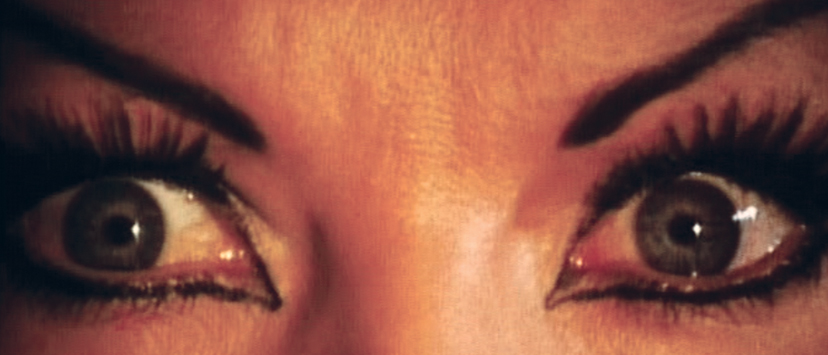
There is gold among the sediment
By Mark Voger, author, “Monster Mash: The Creepy, Kooky Monster Craze in America 1957-1972”
A look at the final four movies of horror icon Boris Karloff, filmed for a Mexican studio less than a year before his death.
[Read previous post: Karloff’s Mexican excursion]
It’s usually said that the so-called “Mexican Karloffs” are awful and laughable.
If you ask me, that’s an easy, knee-jerk reaction. Granted, the movies have some weirdnesses owing to their production and budget challenges. But they should not be summarily dismissed. Forgive the rough edges (and, yes, the occasional unintentional chuckles), and these can be darned okay horror films. There is gold among the sediment.
Karloff is ancient and ill, unquestionably, but also energetic, charming, sometimes funny and, in a scene or two, he gets to burnish his stature as the screen’s bogeyman. Karloff looks much healthier, and occasionally has better lines, than in his previous film, 1968’s “The Crimson Cult.” And, he’s getting around better; there’s no wheelchair in these movies.
It’s surprising how close the old man got to fire and pyrotechnics in these pre-CGI films. All kinds of dazzling pyro happens around him in one “Fear Chamber” scene, as he works calmly at a computer. Flames surrounds him in the “House of Evil” climax.
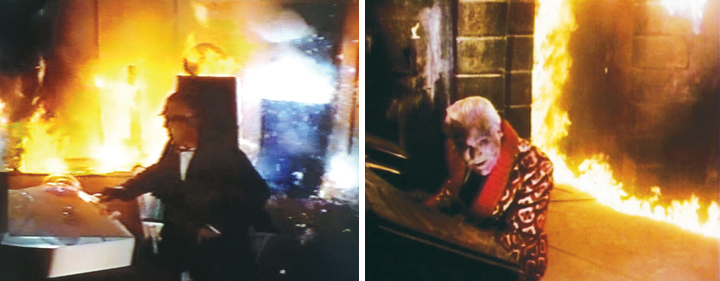
Hey, the man wanted to work, and the Mexicans wanted him. As a result, four more titles were added to the 150-plus films of his 50-year-old filmography. It beat sitting home with his aches and pains.
Another nice surprise is that the films actually have decent continuity. One might expect a patch-quilt, “Plan 9” flow. After all, the films were finished in Mexico City; sets, lighting and even the Mexican actors’ appearances could have been much different between the Hollywood- and Mexico-shot scenes. Thorough planning was clearly involved.
Also, with Karloff speaking English and the rest of the cast speaking Mexican Spanish, you would expect some awkward, lost-in-translation exchanges. Not so much. We really are hearing Karloff’s distinct, mellifluous voice (unlike in his disappointing Italian excursion of 1955, “Il Mostro dell’Isola”). And Karloff’s dialogue and delivery jibes with that of his (obviously dubbed) fellow cast members. Script translations appear to have been carefully executed.
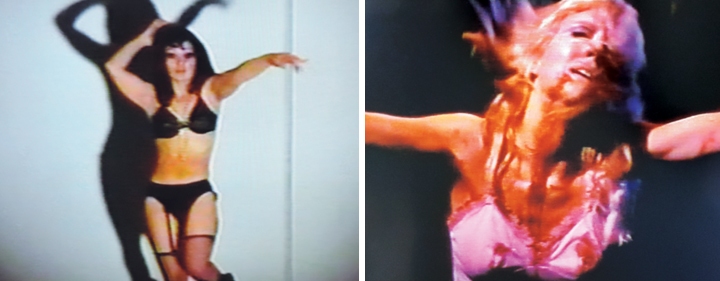
What is most intriguing about the Mexican Karloffs is that they are modern horror films. Karloff was then the living embodiment (if not for much longer) of old-Hollywood horror. Placing him at age 80 in the midst of younger actors from another culture yielded fascinating results.
Whether or not Karloff would have approved, there is a bit of gore, a bit of nudity and adult situations, and some very dark themes in these films. (The old man even took part in some of the bleak stuff.) A few of these depictions, for better or worse, anticipated the coming dumbed-down trends — and rampant misogyny — in horror films such as “The Texas Chainsaw Massacre” (1974) and “I Spit on Your Grave” (1978).
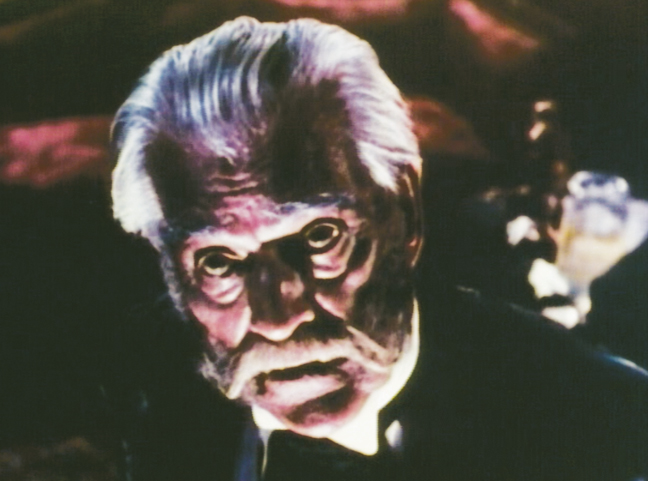
Dare I say, it feels like, in its small way, another passing of the torch. (I say “another” because Karloff passed a lot of torches in his final 10 years onscreen.)
The Mexican Karloffs were co-directed by Jack Hill (Karloff’s scenes) and Juan Ibanez (the followup in Mexico City), though Hill is not always officially credited. They were co-written by Hill (in English) and producer Luis Enrique Vergara (the mastermind behind the whole scheme, whose 1971 death further slowed the films’ releases).
According to end credits on at least three of the films, the Hollywood scenes were shot at Dored Studios, and the Mexican scenes at Estudios America. (Not Churubusco-Azteca? Aww.) “Isle of the Snake People” credits “general wardrobe” to the legendary Western Costume Co. (putting “Snake People” in a category with “Gone With the Wind,” “The Ten Commandments” and “The Sound of Music”).
I recently rewatched three of the films. (Unfortunately, I don’t own a copy of “The Incredible Invasion.” Yet. I did see it in the ’80s, but all I remember is a pretty blonde and the fact that a spaceship set was repurposed from the ornate mausoleum in “House of Evil.”) My thoughts, and research, follow.
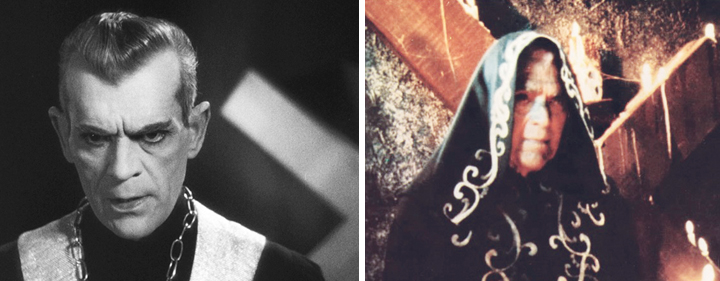
“FEAR CHAMBER”
Synopsis: Elderly scientist Karl Mantell (Karloff) acquires a living rock that he believes holds, and can communicate, many secrets from the center of the Earth. The rock thrives on blood from young women in the throes of terror, so naturally, Mantell and his staff — a curious mix of serious scientists and unsavory characters — create a “fear chamber” made of skeletons, snakes, bugs, blood baths and psychedelic lights in order to terrorize girls coaxed via phony job interviews. He also stages fake devil-cult human-sacrifice ceremonies to further frighten the girls. But when one of the girls is killed — and the rock grows tentacles — Mantell seeks to terminate the operation. His employees Helga (Isela Vega), a rigid psychologist, and Roland (Yerye Beirute), a dimwitted expediter, have other ideas.
Comments: Karloff is an octogenarian Hjalmer Poelzig in the devil-cult scenes. His hoodie robe is stylin’, too. Karloff later plays a funny scene in which he addresses the camera and spouts pseudo-scientific mumbo-jumbo. (It turns out to be a dream sequence.) An actress writhes topless in a very ’60s, over-the-top go-go dance/strip tease.
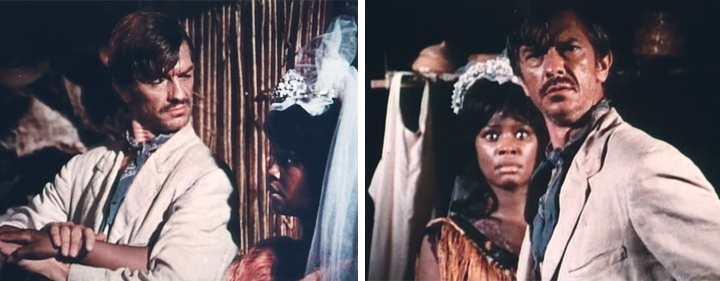
“ISLE OF THE SNAKE PEOPLE”
Synopsis: Pompous police chief Captain Labesch (Rafael Bertrand) aims to bring law and order, mainland style, to the muggy, remote island of Korbai. Laid-back local cop Wilhelm (Carlos East) tries to warn Labesch not to mess with the natives. Another visitor is lovely ingénue Anabella (Julissa), a temperance worker whose uncle, Carl Van Molder (Karloff), owns much of the island and conducts experiments in mind control. Van Molder’s house servant is Kalea (Tongolele), who spikes guests’ beverages with snake venom. (Not enough to kill. Just as … an ingredient?) Investigating the whipping murder of a young woman, Labesch decides to go undercover at a voodoo ceremony. Bad things happen.
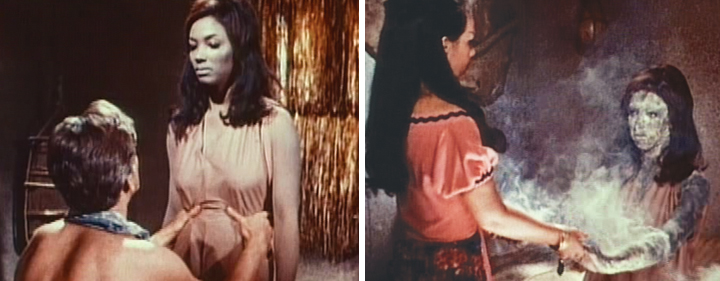
Comments: “Isle of the Snake People” is, hands down, the best of the Mexican Karloffs. This movie absolutely works as a stand-alone; you don’t have to make excuses for it. It is also the sickest film of the bunch; it depicts human sacrifice, cannibalism, zombie hookups … and chicken murder.
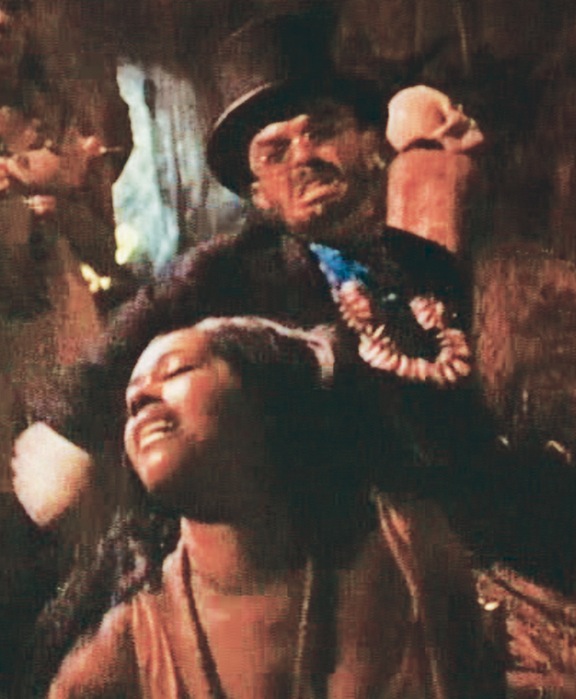
The opening scene flirts dangerously with necrophilia. Sweaty loser Klinsor (Quintin Bulnes) and a diminutive voodoo practitioner in mini-me Damballah duds (Santonen) use freshly killed chicken blood — the wings are still flapping — to resurrect a recently deceased island girl they dig up.
Klinsor kisses the raised girl’s flesh lovingly, while the little guy tries to snuggle with Klinsor. Yeah, this movie is wack.
There’s a hint of Henry Fonda’s tragic “Fort Apache” character Owen Thursday in Bertrand’s portrayal of Labesch, and foreshadowings of Edward Woodward’s character in “The Wicker Man.” Labesch’s unmentioned but prominent facial scar suggests his rigid policing style is born of bitter experience.
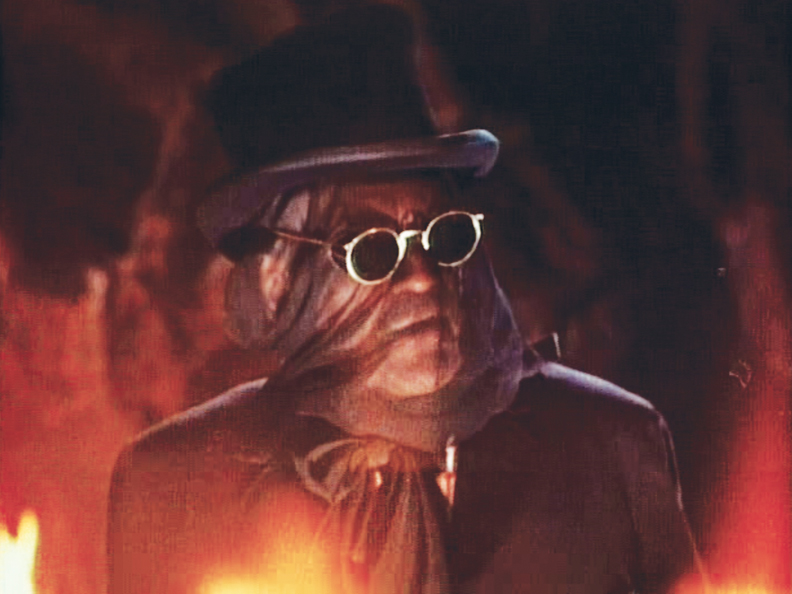
When — spoiler alert — Karloff is revealed to be Damballah, the island’s exalted voodoo priest, his getup is priceless: skull-topped cane, white gloves, “Voodoo Lounge” top hat and shades, and a sheer, black mosquito-netting mask.
But the climax is tainted when another actor’s voice subs for that of Karloff, offscreen, merely for the purpose of some cheap, unnecessary exposition (“Continue the sacrifice … I’m dying …”).
Don’t let that hamper your enjoyment of “Isle of the Snake People,” the best of the bunch — if only for Tongolele’s impeccable snake-dancing.
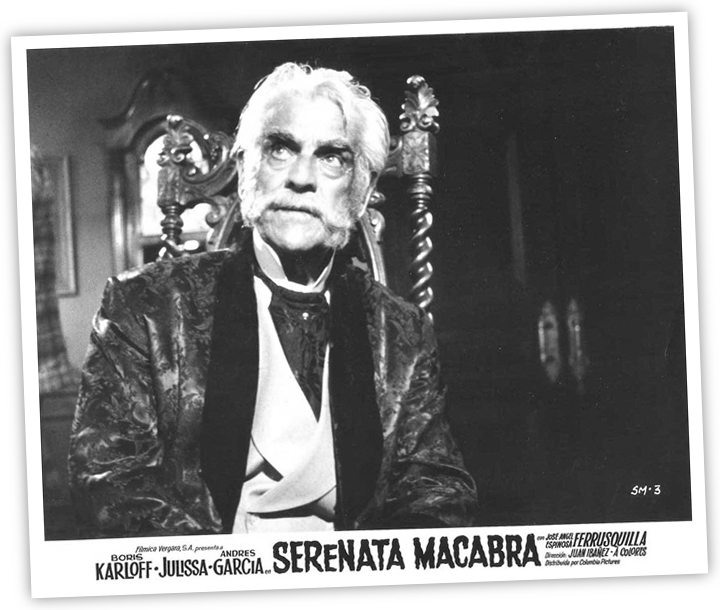
“HOUSE OF EVIL”
Synopsis: In 1900, a murder victim turns up with eyes plucked out, which leads wealthy old codger Matthais Morteval (Karloff) to believe that a certain strain of insanity, which runs in his family, has resurfaced. Morteval summons his far-flung relatives to his dusty mansion filled with taxidermy art, ostensibly to divide his estate … or maybe just to give an organ recital. After Matthais suffers a fatal heart attack, his relatives are killed one-by-one by dolls and toys found in his mansion.
Comments: “House of Evil” is the one traditional horror film of the bunch. There’s a memorable scene in which Karloff addresses a portrait of an ancestor (painted to look like him — another old horror-movie trick). Lit eerily from beneath, Karloff says solemnly: “Somewhere in our garden, the evil weed has sprung up again.” This old-fashioned creepy moment deserves a place on Karloff’s eternal clip reel, but will never win one, because the Mexican Karloffs get no respect. Please watch it and see if you agree?
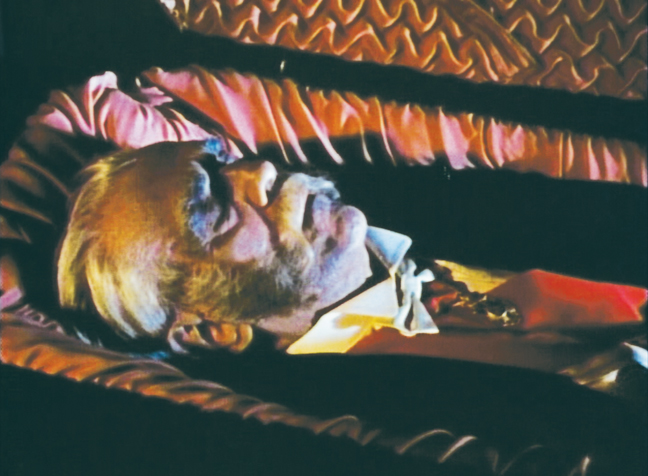
Death has been a dominant theme in Karloff’s oeuvre since 1931’s “Frankenstein.” In “House of Evil,” Karloff does a coffin scene. Yep, he goes there. With about eight months left on the clock.
“House of Evil” has a really cool, classic-horror-movie climax – almost like something you’d see in a Roger Corman Poe. Spoilers follow: Thought dead for half the movie, Karloff reappears in a long red robe (which resembles his spiffy castlewear in “The Terror”), talking all crazy and playing his “coda” on a fire-breathing pipe organ. (It was quite a day for pyrotechnics on the shoot, as Bill Warren reported in “The Frankenscience Monster.”)
But there’s the exact same problem of a tainted climax when another actor, in voiceover, subs for Karloff (“We shall all be purified! The curse of the eyes!”). For what little it adds in exposition, the voiceover detracts mightily in effect.
Read next post: Players in the Mexican Karloffs